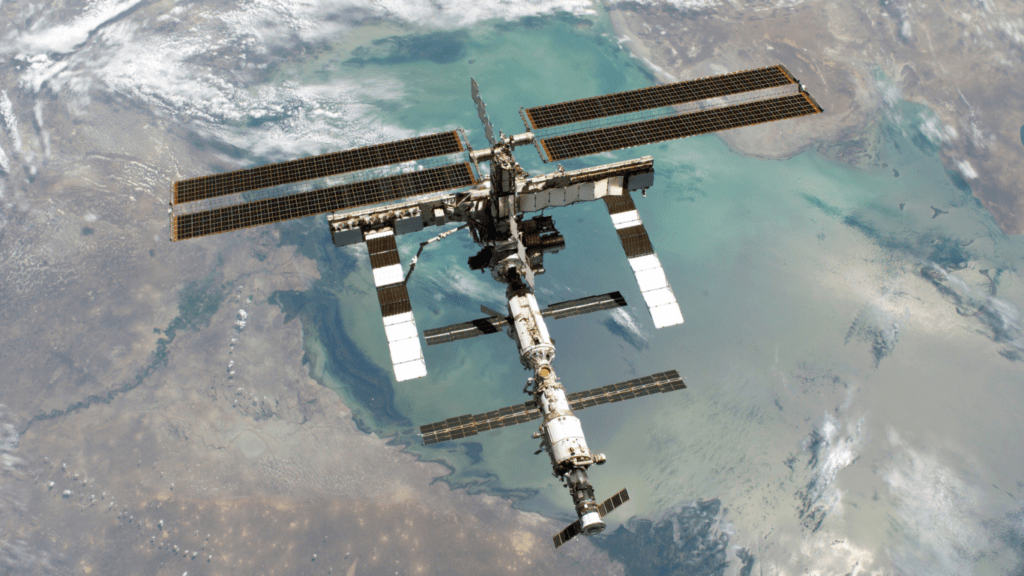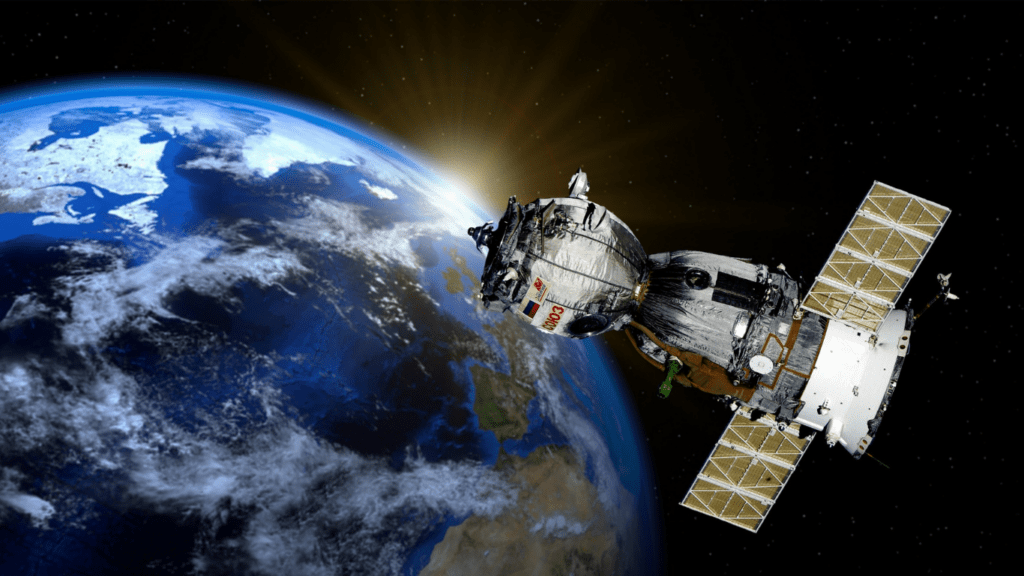The Role of the International Space Station in Space Exploration
The ISS has been pivotal in advancing space exploration. Serving both as a laboratory and a testbed, it contributes significantly to science and technology.
Scientific Research Conducted
The ISS facilitates diverse research. Studies on microgravity help understand its effects on the human body. For instance, muscle atrophy and bone density loss research informs future long-duration missions.
Experiments have examined fluid dynamics, combustion, and protein crystallization in space, revealing insights not possible on Earth.
Technology Developed and Tested
Technological advancements on the ISS pave the way for future missions. The station tests life support systems, space robotics, and radiation protection technologies.
The Water Recovery System, for example, recycles wastewater into drinkable water, vital for long-term space travel. Testing autonomous robotic systems, like Robonaut and Canadarm2, supports satellite repairs and construction tasks.
Major Milestones of the International Space Station
The International Space Station (ISS) has achieved numerous milestones over 25 years. These milestones highlight the ISS’s contributions to science, technology, and international collaboration.
Key Missions and Their Outcomes
- Expedition 1: The first long-term crew, launched on November 2, 2000, set the foundation for continuous human presence in space.
- STS-88: The first assembly mission in 1998 connected Zarya and Unity modules, significantly advancing ISS construction.
- HDEV Experiment: High-Definition Earth Viewing (HDEV), launched in 2014, provided continuous live views of Earth, enhancing public engagement and educational outreach.
- Alpha Magnetic Spectrometer: Installed in 2011, this particle physics experiment helped scientists better understand dark matter and cosmic rays.
- Peggy Whitson: Completed 665 days in space, broke records for female astronauts, and led pivotal research on plant growth and microgravity’s effects on the human body.
- Scott Kelly: Participated in the “Year in Space” mission, providing critical data on long-term spaceflight’s impact on human health, aiding future Mars missions.
- Chris Hadfield: Known for his engaging social media presence, contributed to multiple scientific experiments and bolstered public interest in space exploration.
- Samantha Cristoforetti: European Space Agency astronaut conducted diverse scientific research on fluid dynamics, combustion, and advanced material science in microgravity.
Impact on International Cooperation
The International Space Station exemplifies how international cooperation can achieve remarkable feats. Over the past 25 years, nations have collaborated seamlessly, contributing their expertise and resources.
Participating Countries and Their Roles
Fifteen countries participate in the ISS project. The United States and Russia lead as primary partners, providing modules, vehicles, and crew. NASA and Roscosmos manage logistics, crew rotations, and mission planning.
- United States: NASA handles most American contributions, including the Harmony, Destiny, and Tranquility modules. It also supplies crew and cargo via SpaceX and Northrop Grumman.
- Russia: Roscosmos is vital with its Zvezda and Zarya modules, also providing Soyuz spacecraft for crew transport and Progress vehicles for cargo.
- Japan: JAXA contributed the Kibo module and conducts science experiments, using the HTV spacecraft for resupply missions.
- Canada: CSA developed the Canadarm2 robotic arm, essential for station assembly and maintenance tasks.
- Europe: ESA provided the Columbus Laboratory and collaborates on various scientific experiments. Its ATV cargo spacecraft previously supported logistics.
How Collaboration Has Evolved
International partnerships have deepened since the ISS’s inception. Initially, cooperation focused on sharing technological resources and coordinating construction.
- Early Phases: The 1998 launch marked a significant step with the Zarya module, setting the stage for multinational endeavors. Collaboration was then limited to module construction and integration.
- 2000s Onward: Post-2000, partnerships extended to scientific research. Joint experiments on microgravity, biology, and materials science became common.
- Recent Developments: Today, public-private partnerships, like those with SpaceX and Boeing, broaden cooperation. These initiatives lower costs and increase access, fostering more profound international and interdisciplinary efforts.
The ISS remains a cornerstone of international cooperation, demonstrating how collective human effort transcends borders.
Challenges and Triumphs Over 25 Years
The International Space Station (ISS) faced numerous challenges and achieved remarkable triumphs over its 25-year orbit. Striking a balance between overcoming technological hurdles and celebrating success stories highlights the ISS’s legacy.
Technical and Logistical Hurdles
Maintaining and upgrading the ISS presented significant technical challenges. Initially, assembling over 100 components launched by different countries tested international cooperation.
Engineers and architects meticulously designed modules to interconnect seamlessly, yet complexities surfaced.
Routine maintenance, including fixing the ammonia pump in 2010, showed the necessity of continuous resilience. Space debris posed another risk; operators conducted debris avoidance maneuvers to protect the station.
Addressing these through advanced tracking systems and protective shielding ensured crew safety and mission continuity.
Logistical coordination spanned vast resources and diverse timelines. Managing crew rotations involved intricate planning between different space agencies.
Coordinating with NASA, Roscosmos, JAXA, ESA, and CSA took precise scheduling. During the COVID-19 pandemic, extra precautions ensured missions proceeded without major disruptions.
Supply missions, handled by both government and private contractors like SpaceX, required rigorous precision to maintain the station’s needs.
Success Stories from the Station
Numerous breakthroughs highlight ISS’s success. One notable accomplishment is the Alpha Magnetic Spectrometer (AMS-02), which has provided valuable data on dark matter and cosmic rays. This instrument has contributed to over 190,000 scientific papers.
Astronaut health research has profound implications for long-term space travel. Scott Kelly’s year-long mission illuminated the effects of prolonged space exposure, directly informing future Mars mission strategies.
Peggy Whitson’s leadership on multiple expeditions led to critical advancements in microgravity research.
Advancements in technology also stand out. The deployment of the BEAM (Bigelow Expandable Activity Module) in 2016 tested the potential of expandable habitats.
This innovation considered future projects like lunar bases and Mars habitats. The integration of private sector technology, through partnerships with companies like SpaceX and Boeing, has streamlined transport and expanded research capabilities aboard the ISS.
The ISS’s achievements demonstrate the confluence of scientific ambition and global cooperation. From solving technical challenges to celebrating groundbreaking research, the station’s legacy underscores humanity’s enduring quest for exploration and understanding.
The Future of the International Space Station

As the ISS celebrates its 25th year in orbit, attention turns to its future. My focus lies on upcoming missions, goals, and potential end-of-life scenarios for the iconic space station.
Planned Missions and Goals
NASA and its international partners plan to expand scientific research aboard the ISS. For example, future missions aim to study long-term human health effects in space, supporting Mars exploration ambitions.
Enhanced robotic systems, like Astrobee, are set to assist astronauts in daily tasks and maintenance, improving overall efficiency.
Additionally, the ISS will continue serving as a platform for testing new technologies, such as advanced life support systems and next-generation spacesuits, which are crucial for deep space missions.
Possible End-of-Life Scenarios
Several end-of-life scenarios for the ISS are currently under evaluation. One possibility involves deorbiting the station and safely managing its reentry to minimize debris risks.
Another option is transitioning parts of the station to commercial entities, which would allow private companies to maintain and potentially expand the ISS’s modules for commercial research and tourism.
NASA and its partners could also choose to repurpose the ISS as a training facility for future deep space missions, utilizing its established infrastructure to prepare for Mars and beyond.
The future of the ISS holds numerous possibilities, balancing international collaboration and innovative advancements.




